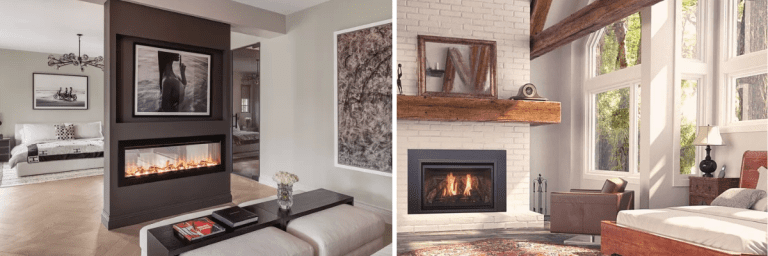15 Stunning Low Attic Bedroom Ideas for Angled Ceilings: Transform Your Space Today
Angled ceilings might seem like a design headache, but in an attic bedroom, they’re actually your secret weapon. These cozy top-floor spaces are full of charm and potential—you just need the right ideas to bring them to life.
Whether you’re transforming a forgotten loft into a dreamy hideaway or adding a snug guest room under the eaves, low ceilings and awkward corners don’t have to stand in your way.
In fact, with a little creativity, sloped ceilings can become the standout feature of the room.
From clever storage solutions to layout tricks and lighting hacks, here are some of the best low attic bedroom ideas to help you turn that tight, tricky space into a stylish and comfortable retreat.
1. Exposed Brick Wall in an Attic Bedroom
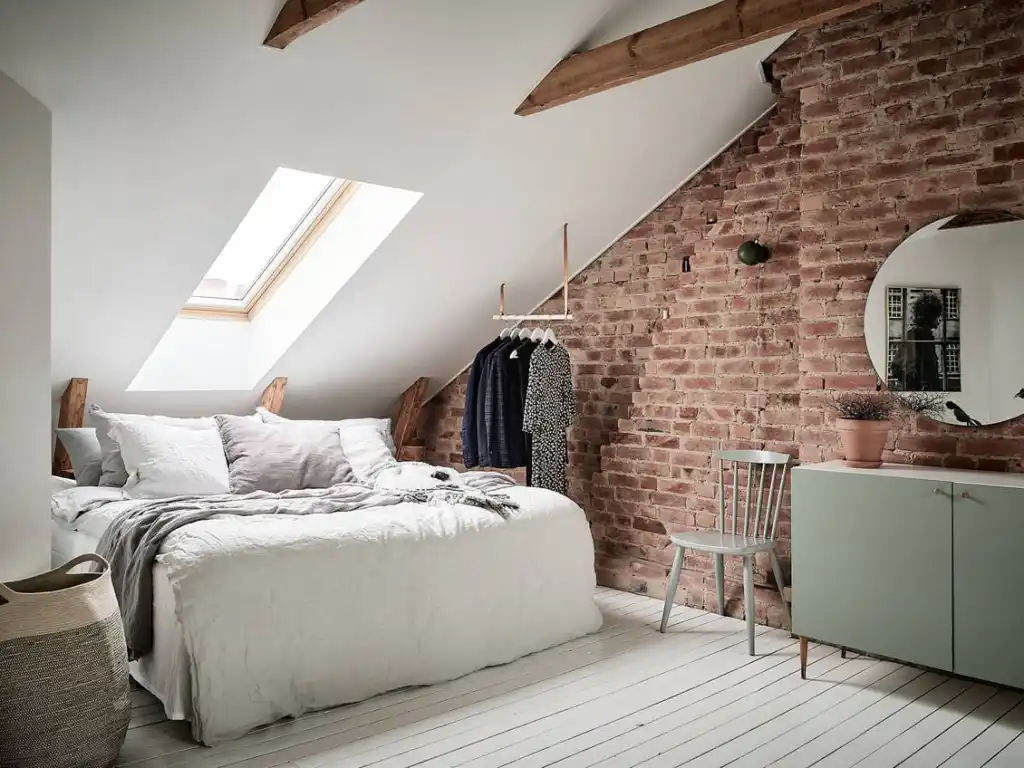
That raw brick texture against sloped ceilings creates instant character! Leaving one wall exposed creates a focal point without overwhelming the space. The natural warmth of brick pairs perfectly with soft bedding to balance the industrial edge.
Pro tip: If your attic lacks original brick, consider brick veneer panels—they’re lightweight and perfect for attics where structural weight matters.
2. A Bright Attic Bedroom With Soft Linens

White walls are your best friend in low-ceiling spaces! Crisp white paint with sky-inspired blue linens makes light bounce everywhere, instantly making the ceiling feel higher.
Those skylights are game-changers too—they flood the room with natural light while maintaining privacy. If you’re on a budget, light-colored bedding and mirrors can amplify existing light without major renovations.
3. Maximize Storage Space in Your Attic Room

Every inch counts in attic bedrooms! Built-in shelves and wardrobes that follow your ceiling’s angle add tons of storage without eating floor space.
Take cabinets all the way to the ceiling—those “unusable” triangular spaces are perfect for seasonal items or things you rarely access.
Painting built-ins the same color as the walls makes them virtually disappear, creating an illusion of more space.
4. Transform an Attic Bedroom With Faux Concrete Walls
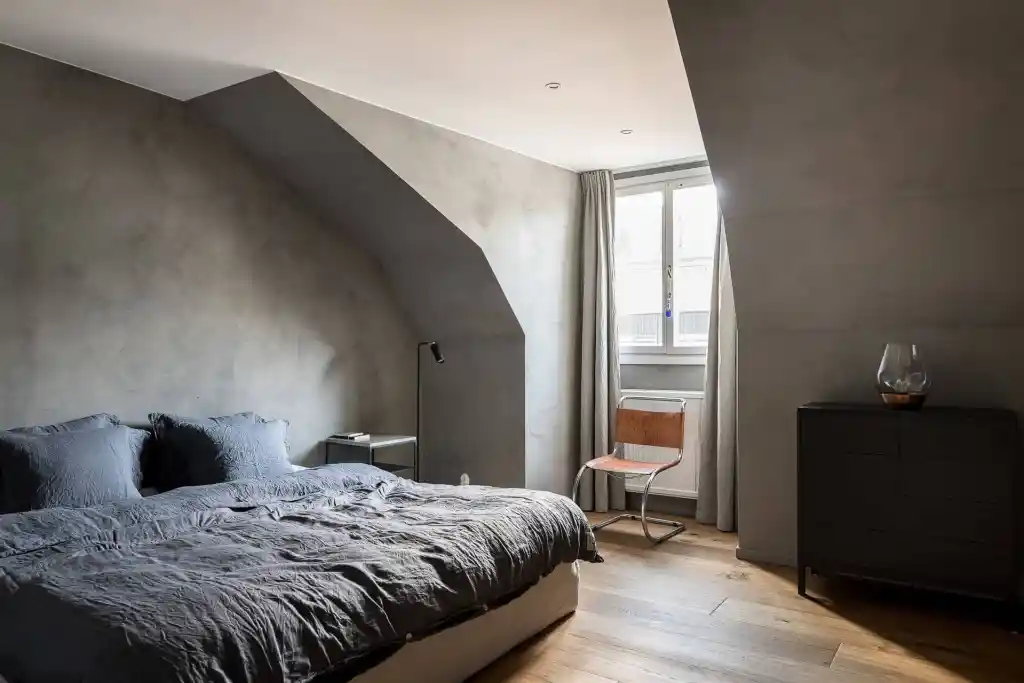
Want a modern loft vibe? Limewash paint creates that concrete look without the weight or permanence!
This technique works amazingly well with angled ceilings because it adds texture without making the space feel smaller.
Keep your furniture low to the ground when using this bold treatment. You can achieve this look for under $200 in paint supplies—much cheaper than actual concrete finishes and completely DIY-friendly.
5. A Bed Placed Perpendicular to the Windows and Slanted Roof to Maximize Floor Space
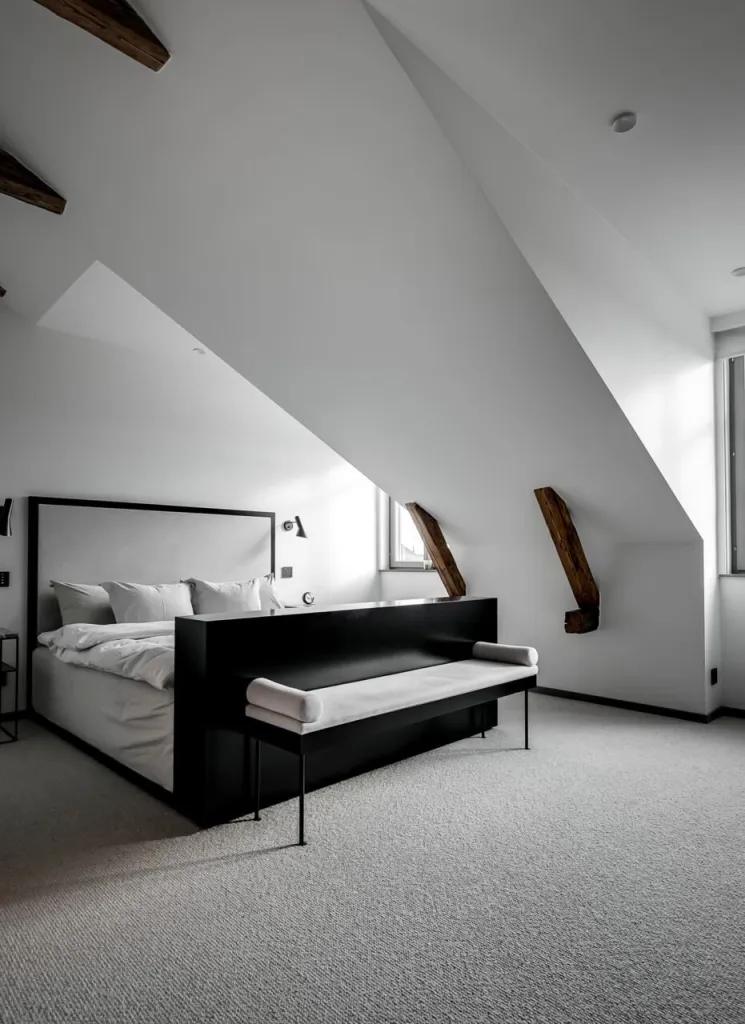
Here’s a layout secret: placing your bed perpendicular to the lowest part of your ceiling gives you more usable standing space! This smart arrangement helps avoid daily head bumps.
The dormer windows in this setup create perfect reading nooks on either side. By positioning your bed strategically, you’ll gain several additional square feet of functional space where you actually need height—like your dressing area.
6. Open Geometric Shelving in an Attic Bedroom for Small Pops of Decor
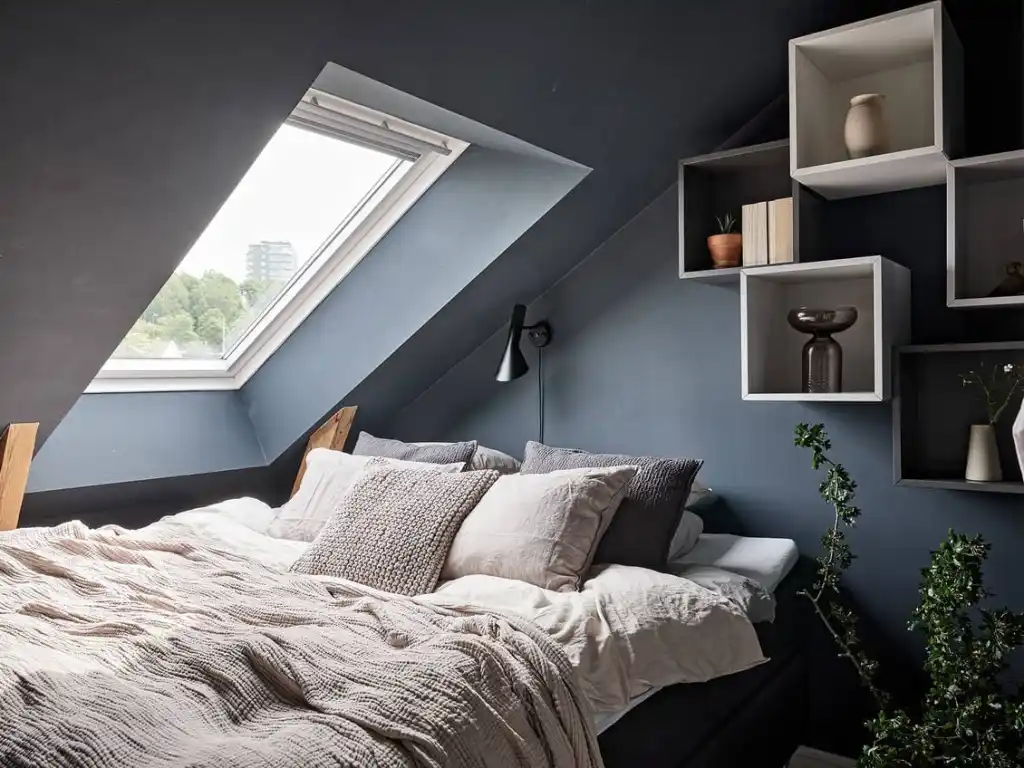
Those dusty blue walls with neutral accents create serious depth in tight spaces! Square shelving echoes the angles in your room while providing display space without cluttering the floor.
Stagger shelf heights to follow your ceiling’s slope. Start with just 3-5 small decorative items—in attics, less truly is more.
This approach gives you style without sacrificing the open, airy feeling you need in low-ceiling rooms.
7. Showcase Exposed Beams in Your Attic Bedroom
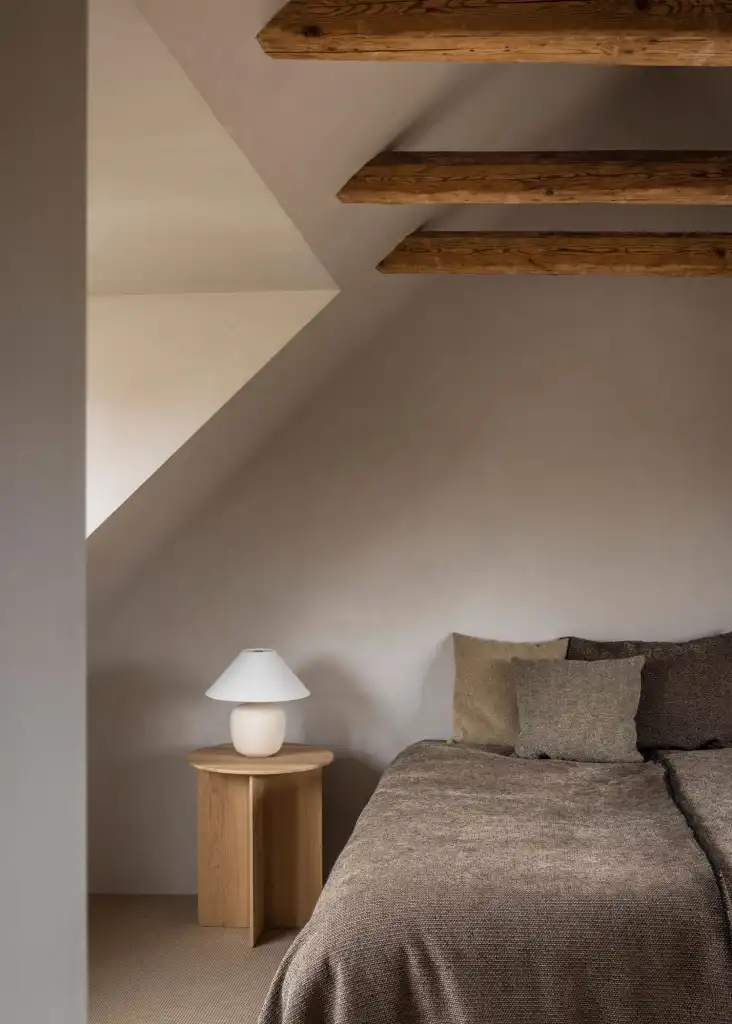
Don’t hide those beams—celebrate them! Original structural elements tell a story and add authentic character you simply can’t buy. The contrast between rough beams and smooth walls creates visual interest that draws the eye upward.
Try this designer trick: paint between the beams a shade lighter than the beams themselves. It makes the ceiling appear much higher while preserving the rustic charm.
8. A Low Bed Frame for the Illusion of Space
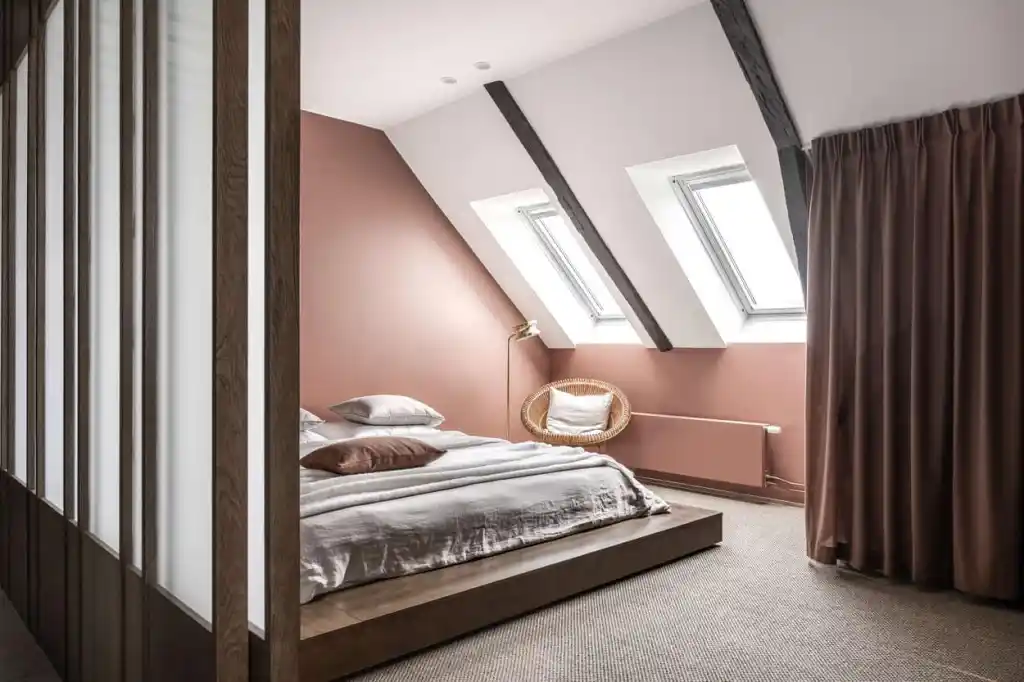
Platform beds are attic bedroom heroes! By keeping your bed close to the floor, you create more headroom where you need it most. This approach works wonders for ceiling heights under 7 feet.
That sliding door is another space-saver worth copying. Traditional swing doors can eat up to 10 square feet of usable space—a sliding alternative gives that space back to you while adding architectural interest.
9. A Skylight Reflecting on a Gallery Wall
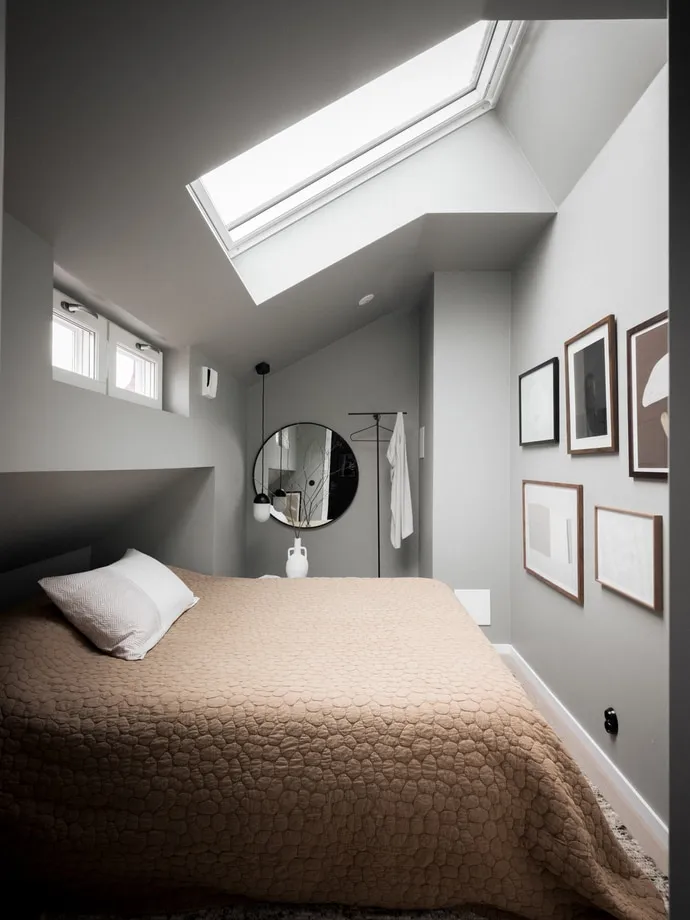
Natural light is precious in attics, so why not maximize it? Position mirrors or glass-framed art opposite skylights to bounce that beautiful light throughout your room. The reflection doubles your light source!
Be mindful of direct sun exposure on valuable artwork or photos. Using UV-protective glass in your frames can prevent fading while still allowing that gorgeous light distribution.
10. A Dramatic Attic Bedroom in Shades of Brown
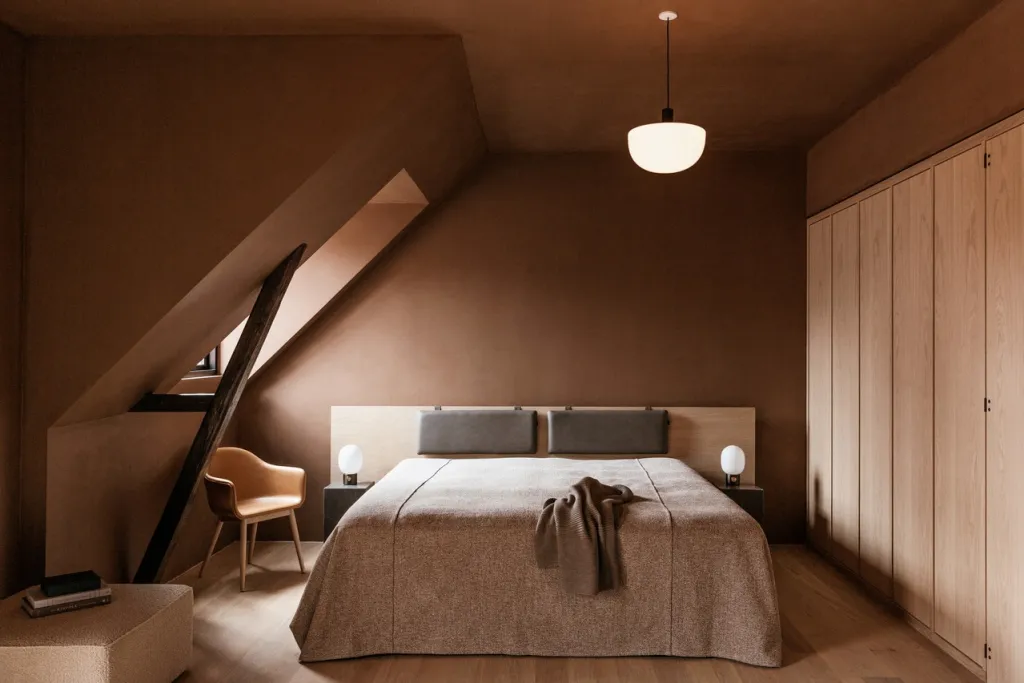
Deep browns create a cocoon-like feeling that’s perfect for sleep spaces! These rich tones transform awkward angles into intentional architecture. The built-in closet follows the roofline perfectly, using space that would otherwise be wasted.
Pro tip: Incorporate at least one lighter element to prevent the dark colors from feeling too heavy. That natural wood bedside table provides the perfect balance while adding warmth.
11. White Linens in an Attic Room with Higher Ceilings

Contrasting colors draw your eye horizontally rather than vertically—an excellent trick for rooms with challenging ceiling heights! That slate gray accent wall anchors the space while white linens keep it fresh.
Round fixtures work wonders in angular rooms. Notice how that circular pendant softens all the straight lines?
It’s a small detail that makes a massive difference in how balanced the space feels.
12. Add Plants to an Attic Bedroom for a Welcoming Feel
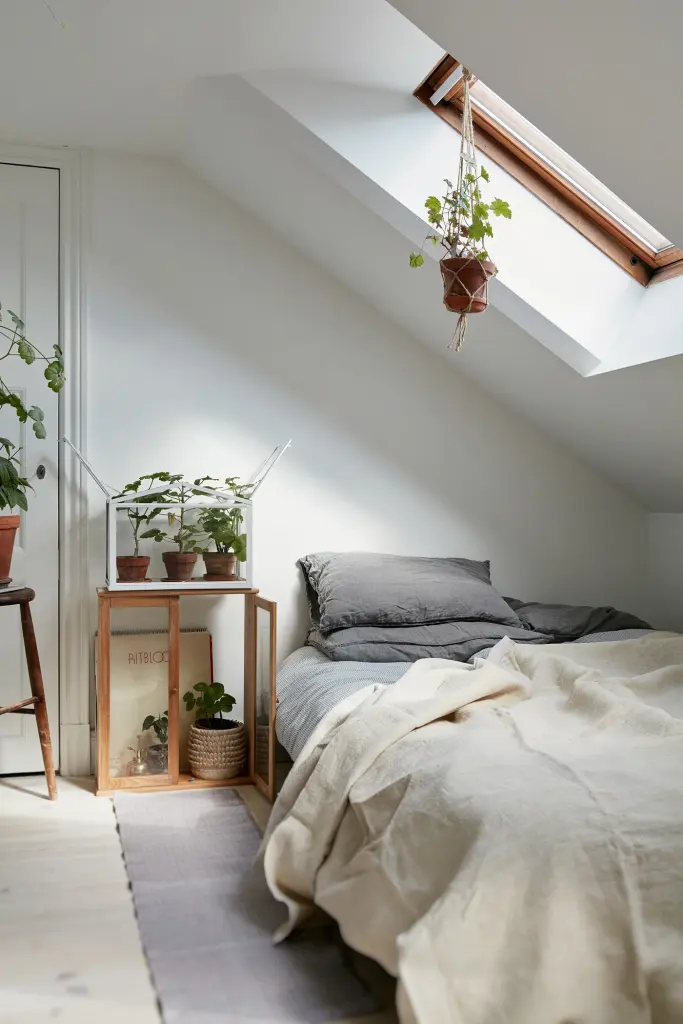
Plants love those sunny attic windows! Hanging plants don’t take up precious floor space while snake plants and pothos thrive in bright attic light and improve air quality.
Try mounting plant shelves at different heights to follow your ceiling’s angle. This creates a living art installation that draws attention away from awkward corners while bringing nature into your sleep space.
13. Add Function to a Small Space With a Twin Bed
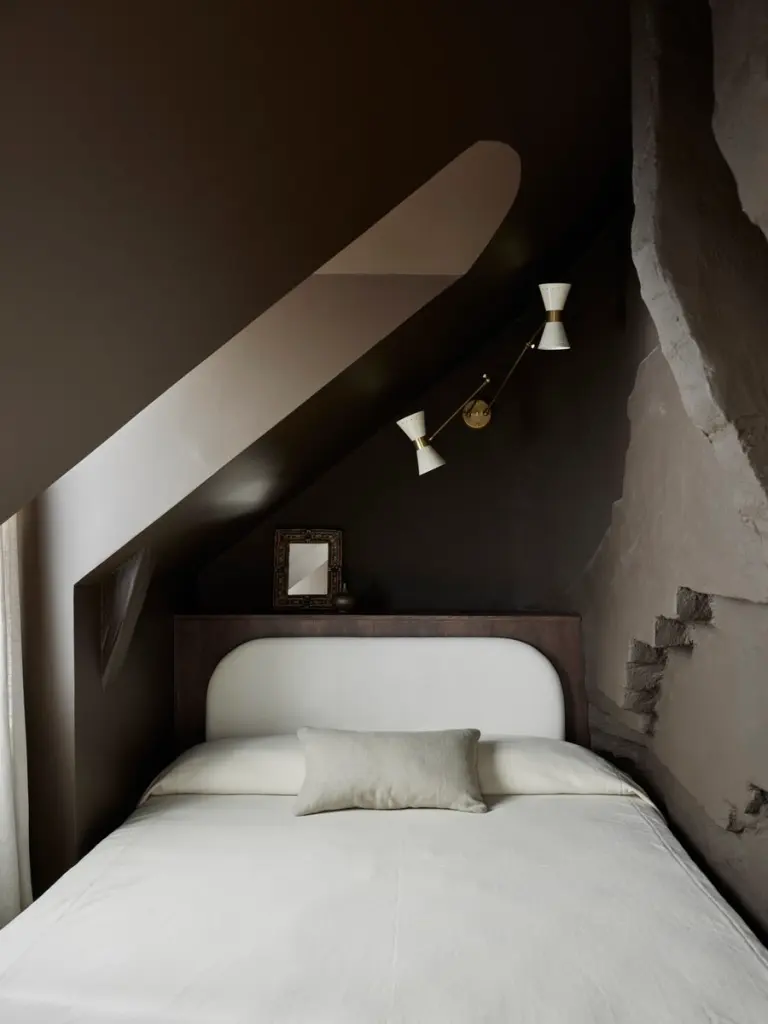
Even the tiniest attic nook can become a cozy bedroom! A twin bed tucked under the lowest part of the ceiling creates a nest-like feeling that’s perfect for guests or kids.
The high-contrast dark walls against white bedding make the small space feel intentional rather than cramped.
These small spaces often work best with minimal decor—focus on quality over quantity for a space that feels designed rather than cluttered.
14. Natural Light and Statement Pieces in a Uniquely Shaped Attic Space

Embrace those quirky angles! Positioning your bed under the slope creates a natural canopy effect that feels both protective and stylish. The side walls form a perfect nook—like your own personal cave.
Adding one bold piece of furniture or art in challenging spaces tells visitors this unusual room was designed with purpose, not just making do with leftover space.
15. A Soft, Cozy Space With a Large Dormer Window
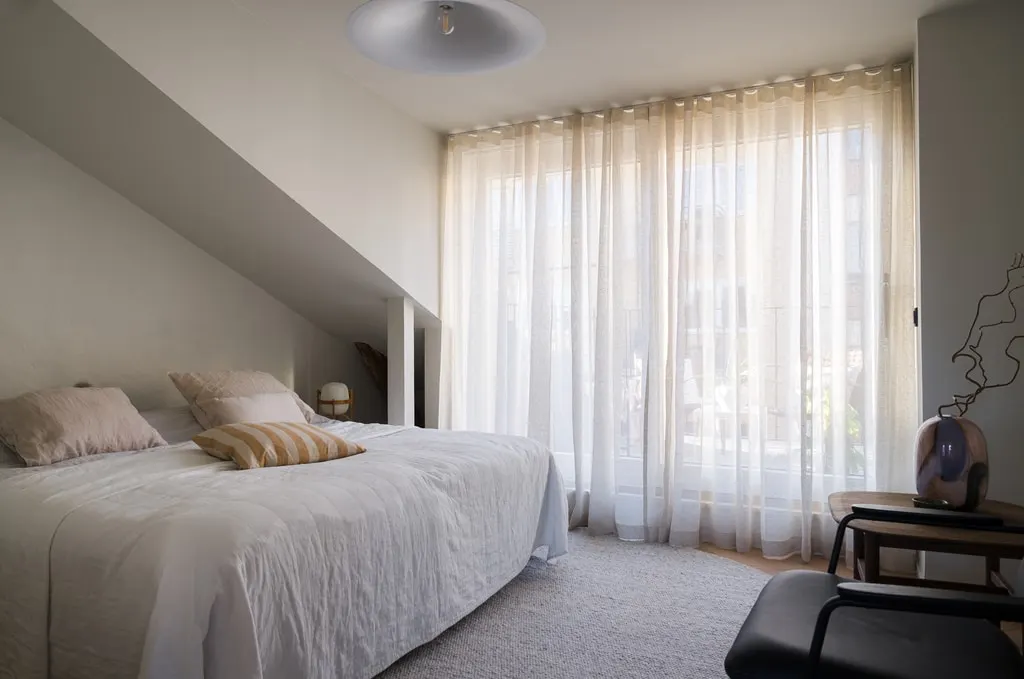
Large windows in attics can create temperature control challenges. Those flowing curtains aren’t just pretty—they’re functional!
Double-layer curtains work best: sheer for filtered light and blackout backing for temperature control and better sleep.
The neutral color scheme here is no accident. By limiting contrast, your eye moves smoothly around the room rather than getting caught on ceiling angles—a designer secret that makes even the most challenging architecture feel harmonious.
What attic bedroom challenge are you facing? These ideas work for spaces of all shapes and sizes, proving that those angled ceilings can become your room’s best feature rather than a design obstacle!



